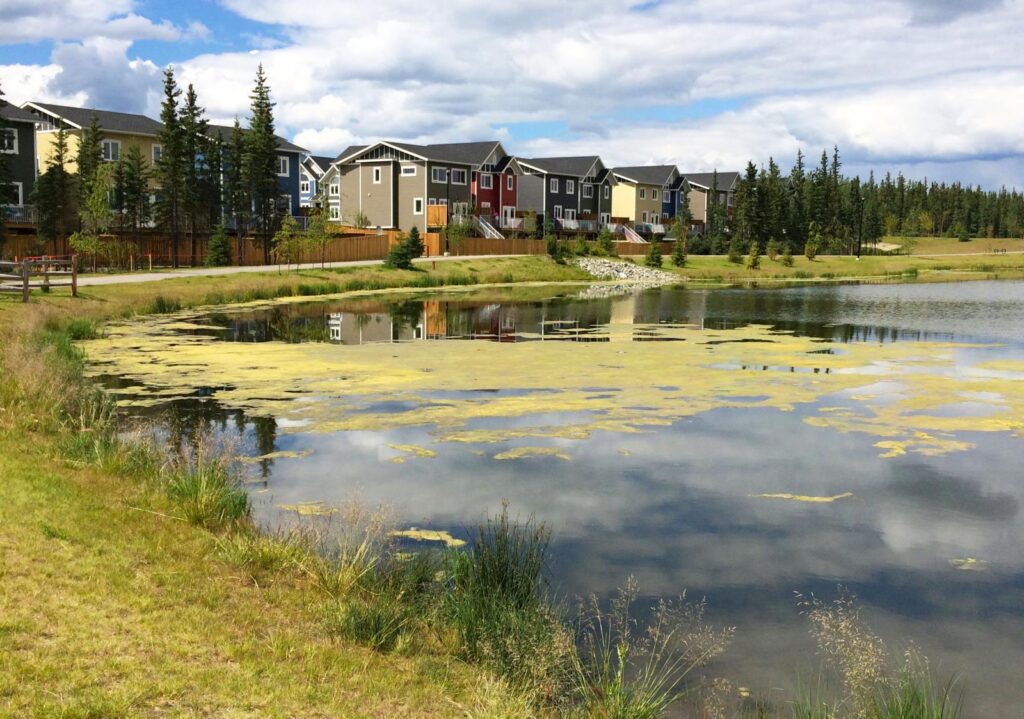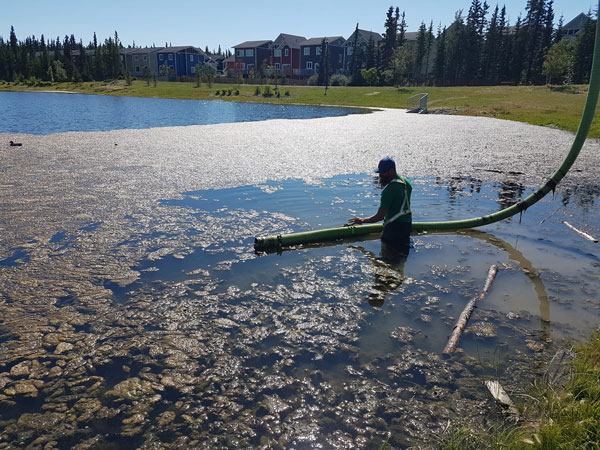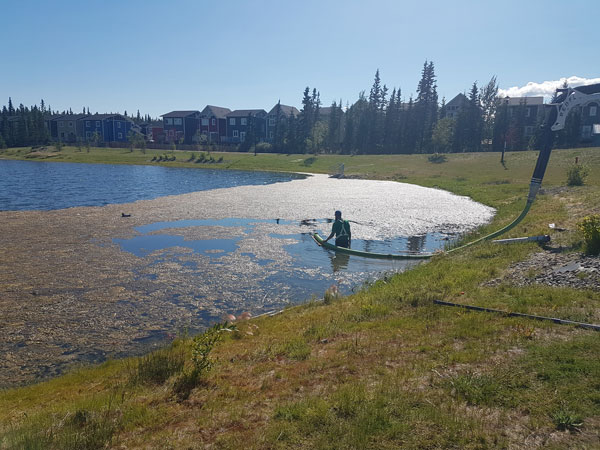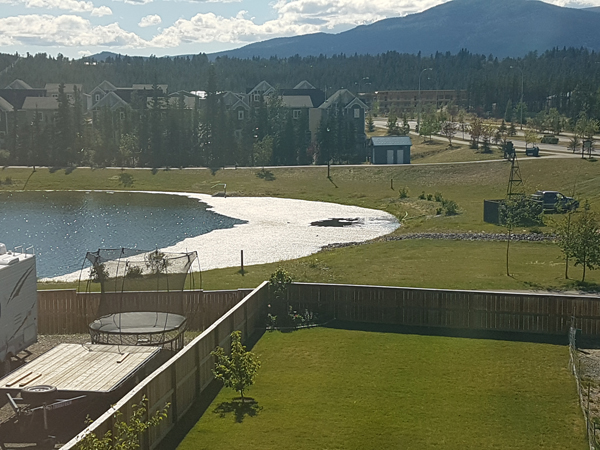Storm Water

Residents have an important role to play in keeping the ecosystem of the Whistle Bend retention and evaporation pond healthy and functioning in its intended purpose. Read on to learn more!
A retention and evaporation pond was incorporated into the design of Whistle Bend to add visual and recreational interest to the area, and to help achieve City goals for sustainable storm water management. Since the pond’s construction in 2010, some minor adjustments have been made to ensure its functionality. The pond is not intended (or safe) for swimming purposes, but can be used for skating when frozen during the winter. The surrounding grounds provide opportunities for walking, biking, and other leisure activities.
The surface drainage from roads, driveways, and residential lots in Whistle Bend is collected into the neighbourhood’s storm water sewer network and is discharged into the retention and evaporation pond. The drainage moves quickly in gutters before entering the network, picking up effluents as it travels such as fertilizer from the lawns, soap from car washing, and waste products from pets and wildlife, to name a few. The City does not treat or process storm water before it enters into the pond. One of the pond’s functions is to allow for sediment and contaminants to settle out of the runoff before water is released into the natural watercourse.
Algae are naturally occurring plants that live in water and are generally part a normal and healthy water ecosystem. The pronounced presence of algae blooms can indicate that excess nutrients are present in the water body, and may need to be managed. Algae thrive on nutrients, such as nitrogen and phosphorus, to grow and reproduce, which are nutrients found in fertilizers, soaps, and other detergents.
- The City is not fertilizing the grass within the area of the pond.
- The City is considering a capital project to increase the aquatic vegetation around the perimeter of the pond.
- The City is planning to complete one mechanical removal of floating algae per year and will monitor to determine if more is required.



Arctic Backhoe using their vactor to remove scum on July 29, 2021.
To minimize the occurrence of contaminants and algae blooms in the pond, it is important for residents to limit the amount of nitrogen and phosphorus nutrients entering into the water system.
Residents are asked to:
- Reduce or eliminate the use of lawn fertilizers and pesticides
- As an alternative to fertilizers, top dress with compost and leave grass clippings on the lawn
- Plant native species that do not require large amounts of watering or fertilizer
- Use rain barrels to catch roof runoff and use it for watering gardens
- Plant front yard vegetation to help filter storm water that flows from the lawn to the roadway
- Pick up after pets and dispose of pet waste in the appropriate waste bins
- Wash cars at commercial car wash locations
- Soaps and other detergents should not be disposed of directly into storm water catchments, since discharge water is not treated before arriving in the pond)
